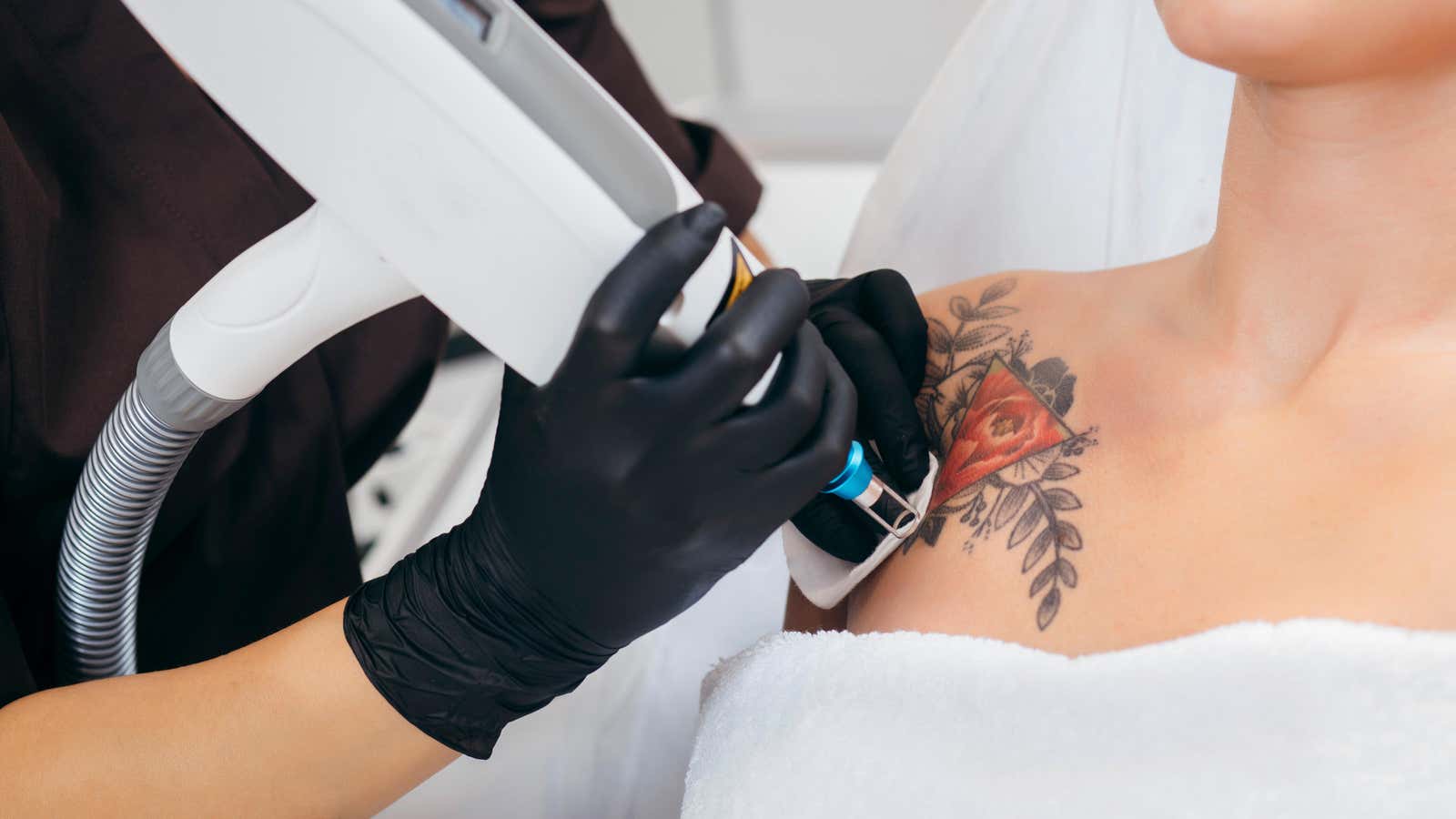How Difficult (and Painful) Is a Tattoo to Remove?

There are many reasons why you might want to have your tattoo removed. Maybe it was done poorly, maybe you don’t care anymore about what was dedicated, or maybe you just want to clear some space to add some fresh ink. Whatever your reason, the urge to get rid of a tattoo can be as strong as the initial urge to go under the needle, but there are a few things you need to know when you start the process.
Find the Right Removal Specialist
When you’re looking for someone to remove your tattoo, be as picky as you probably were when you first got it. Rob Harris, founder of Disappearing Inc. , said that you should look for a specialty store in your area, even though dermatology offices and medical centers may offer such a service. He noted that laser surgeons who deal exclusively with tattoo removal will have more knowledge and experience than doctors or technicians who provide a variety of services related to laser and cosmetics.
He also suggested finding a place that has a huge amount of before and after pictures that you can check out on their website. Often when you get a tattoo, you check the artist’s previous work, right? Do the same here.
Stop by for a consultation once you find a few removal specialists you like. In many cases, these consultations will be free of charge. You’ll be spending a lot of time with the remover you choose, so it’s important that you know you’re comfortable with them and they’ll help you make a plan. Ask questions while you’re there, including if you can see more before and after photos of the removed tattoos that were similar to the ones you’re trying to get rid of. Ask about prices too: The American Society of Plastic Surgeons estimates that each treatment costs just over $400 on average.
Finally, ask what steps they are taking to reduce the pain. This is by no means a painless process – you pierce the skin with a laser. Harris said Disappearing Inc. uses a cooling machine and pain relief before laser treatment, for example, to make it less painful.
Realize that it takes time and money and every tattoo is unique.
Harris noted that the tattoo removal process can take anywhere from nine months to two years. The lasers involved break the skin into smaller particles, and the body flushes those particles out over time, he says. You will go to meetings every few months as this process repeats over and over again.
Some tattoos disappear with less hassle than others. For example, if you have a stick and poke tattoo or a non-professional tattoo, Harris says it probably won’t take you as many sessions or as long to get rid of it. Professionally done tattoos, especially with a tattoo gun, will take longer.
Other factors that may affect the amount of effort required to extrude your tattoo are the following:
- Tattoo age
- The colors used in the tattoo
- Pigmentation of your skin
Harris noted that, for example, yellow is more difficult to remove than some other colors, but the difficulty depends on a combination of factors: “It’s not just about the ink. I can bring out yellowness on a person with very fair skin because we don’t have to worry about the laser affecting the pigment of the skin, while if you have yellow and your skin is much darker, the laser doesn’t care if it is light . removes the pigment of your skin with the pigment of your tattoo. In some cases, it will do both.” With all that said, he added, his team removes yellow tattoos “all the time” with no problem, so it can be done. It is unlikely that you will run into a situation where you simply cannot remove the tattoo; the real questions are how much time and money you are willing to spend on the process.
That’s why it’s so important to go to a specialist who knows what they’re doing and can schedule your appointments at the interval that works best for you and your skin. The good news, according to Harris, is that with proper removal, the skin will look like it was before the tattoo “in the vast majority of cases.” It just won’t happen overnight.